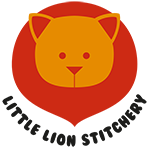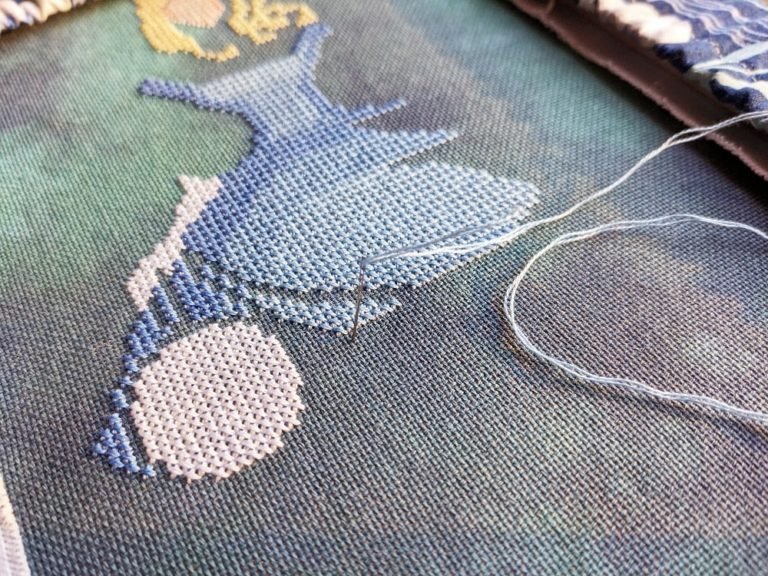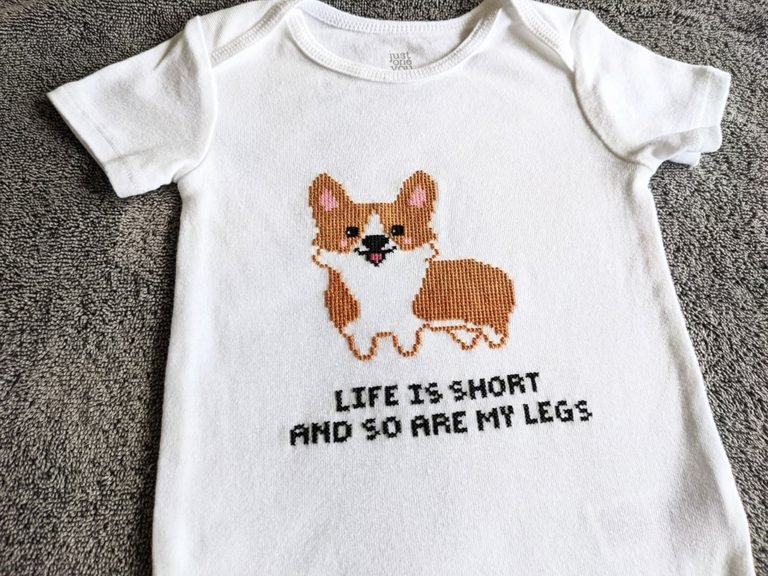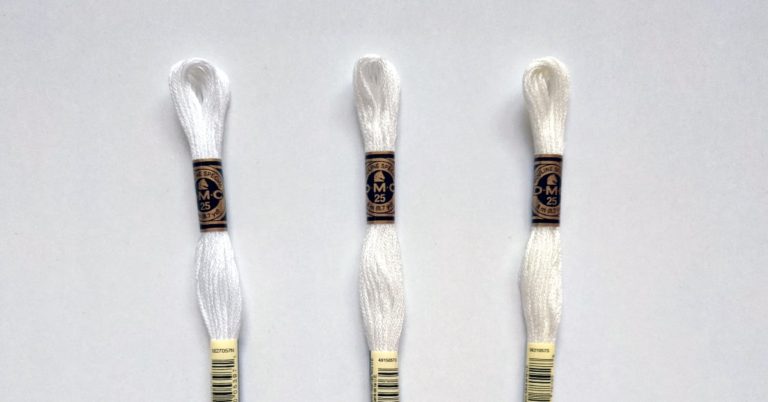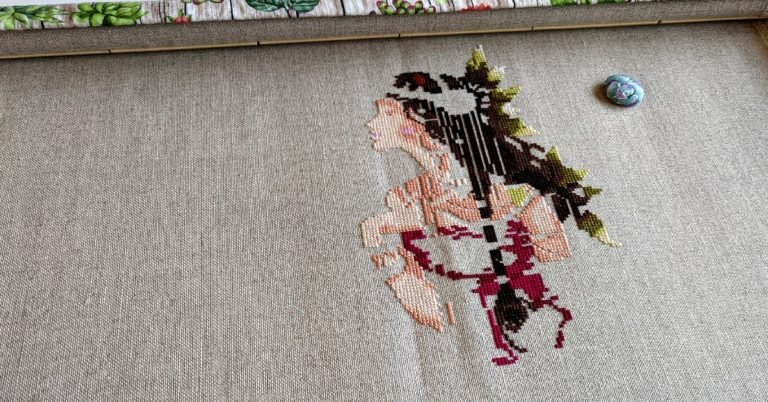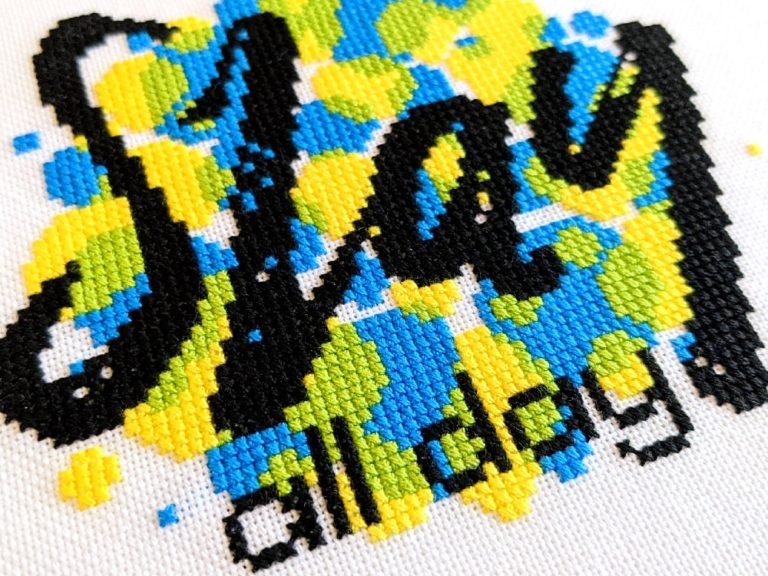What Supplies Do You Need to Start Cross Stitching?

If you are brand spanking new to cross stitching and want to get all your supplies all in one swoop, I recommend getting a kit.
A kit will contain all the basic supplies that you need to complete your cross stitch project. However, the supplies that come in a kit may not always be the best.
What if you don’t like the kits available in craft stores? It’s easy to “kit up” your own project once you know what materials you need.
The supplies required to start cross stitching include a pattern, fabric, embroidery floss, and a tapestry needle.
Determine What Pattern to Stitch
Once you decide on a pattern, you can figure out what materials you need from there.
You can pretty much find a pattern of anything you want on the internet. The topics are limitless.
When picking your pattern, keep in mind the complexity of the pattern, your skill level, and your budget. Some patterns are more complex than others and the more embellishments a pattern has, the more expensive it will be to kit up.
WANT FREE CROSS STITCH PATTERNS?
Sign up for my newsletter to get access.

Pattern

What Type of Patterns Can You Purchase?
Digital Charts
Digital Charts are in a PDF format that can be downloaded to your tablet or other devices.
This means that there is no wait time or payment for shipping!
Another benefit of digital charts is that you can zoom in. It helps to enlarge portions of the charts to be able to keep your place.
Digital charts usually come in a color format with symbols – which is my favorite. Don’t worry, if you don’t like colored charts, many also come in black and white.
PDFs are designed to work with apps like Pattern Keeper to help you keep track of your stitching progress. You can highlight stitches and know how much of the project is complete.
Sometimes a hardcopy is more convenient so feel free to print the pattern for personal use.
You can find many digital cross stitch patterns available on Etsy. Nowadays many designers also carry digital versions of their charts on their websites.
Printed Charts
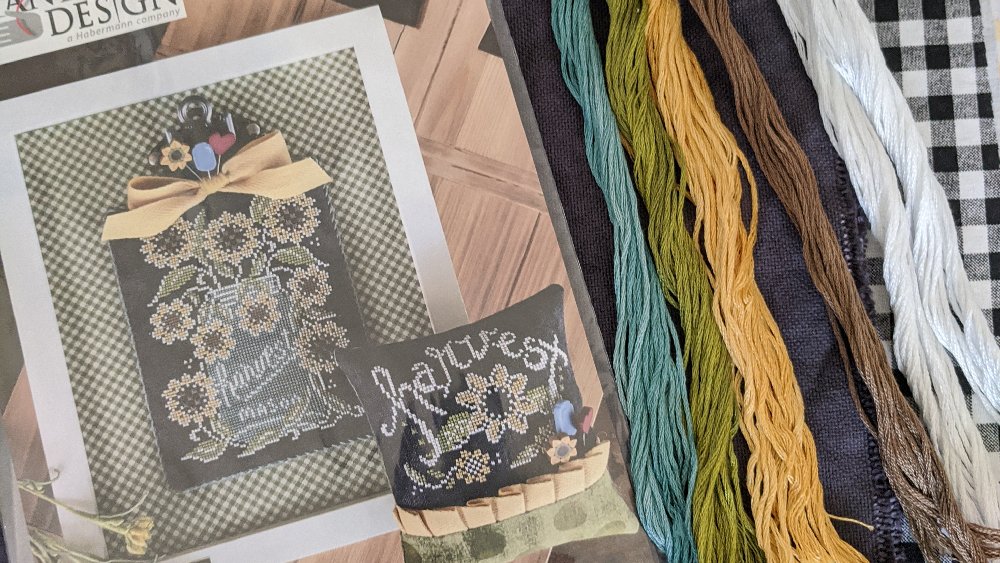
Printed charts are hardcopies. It is common to scan printed charts to make working copies.
Working copies are copies that you have no problem writing on. Maybe you want to track your progress manually by highlighting your completed sections or take notes for color conversions.
If you have pets as I do, a working copy is essential in case your mischievous stitching buddy destroys your pattern.
Usually printed charts are offered in black and white. This can make it more difficult to stitch, especially if two symbols are next to each other and look similar.
Many designers only offer printed charts. You can scan and upload your chart to give you the benefits of a digital chart.
Books and Magazines
Books and magazines usually come in both printed and digital versions.
The advantage of ordering a book or magazine is that you aren’t just getting one pattern you are getting numerous.
In addition to patterns, you are getting tips, techniques, and advice from designers and cross stitching experts.
Where Can You Purchase Cross Stitch Patterns?
Etsy
Etsy allows designers to sell their digital patterns without the need for their own website. Because of how simple the process is to upload patterns, charts are more easily accessible to stitchers.
Like I mentioned before, when you buy a pattern there’s no wait, you can download the pattern and start stitching.
There are many sellers on Etsy that sell printed versions of charts as well.
Online Shops
My favorite place to buy printed charts is 123stitch. They are a reputable company, their shipping is always fast, and their prices are great.
Another favorite is Fat Quarter Shop. They also sell lots of cross stitch accessories and merchandise.
These are just a couple of examples of credible sources to purchase patterns and supplies.
LNS (Local Needlework Shop)
Support your Local Needlework Shop. It helps shops stay in business. This is important because it’s nice to be able to see products in person.
An example would be trying to pick the right color fabric for your project. If you take your floss to a shop you can match it against the fabric to make sure the fabric is the right color.
When you see the fabric on your monitor it may not be the same color due to how your screen displays color and the lighting in which the picture was taken. It can be difficult to determine what the color actually is.
Another factor is that all hand-dyed fabrics are slightly different because of the dying process.
It’s best to be able to go into a store this way you know what you are purchasing.
Beware of Amazon
Amazon sells lots of counterfeit charts by third-parties. Many of these charts are appealing because usually they are stamped cross stitch patterns.
Although it might be tempting, these sellers do not own the rights to these patterns. Please do not support them by buying from them.
You might think that you are getting a good deal because they are inexpensive but not only are they stolen but the materials are of lower quality.
Fabric
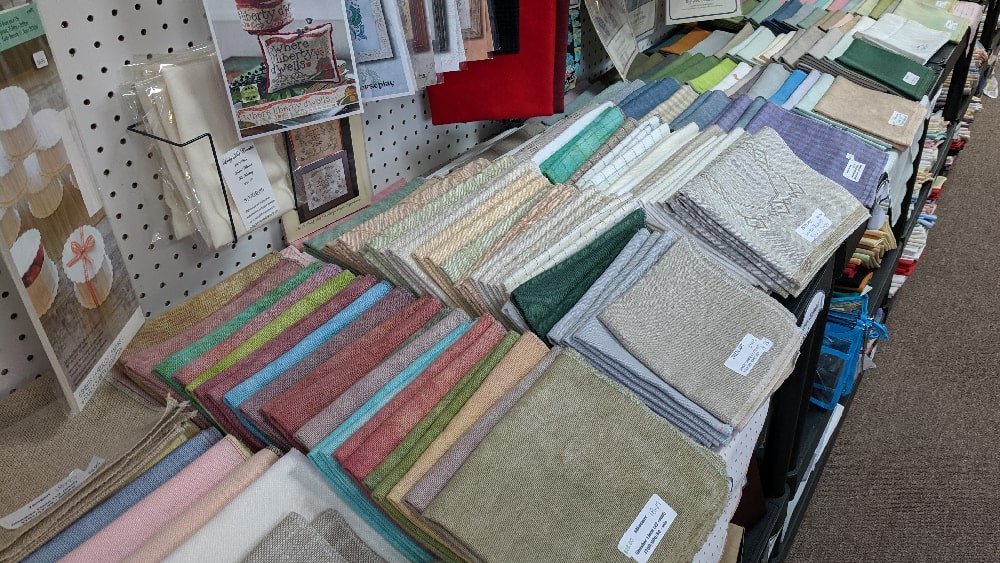
Purchase quality fabric from a reputable company. Zweigart, Wichelt, and Charles Craft are the biggest names.
If you buy fabric from one of the big box stores, you run the risk of not getting quality fabric. Many stitchers have complained that the fabric is not even.
The count of the fabric will be off in one direction or the other and usually, it’s too late by the time you notice it. You will be stitching your circular pattern and all of a sudden you realize it’s oval.
Cross stitch fabrics are made up of different fibers and come in several stitch counts. Stitch counts are the number of stitches per inch. The smaller the stitch count the bigger your project will be.
The most common materials are aida, evenweave, and linen.
Aida (Beginner)

Aida is the best beginner fabric because of the bigger holes on the fabric. You count only over one square, unlike evenweave or linen.
The most common counts for aida include 14 count, 16 count, and 18 count.
As a beginner, you will want to start with 14 count fabric until you become familiar with stitching. Because there are less holes per inch, the holes are bigger and easier to see.
Many stitchers continue to use aida after they become more experienced because of its ease of use.
Aida is made from cotton and is easy to dye. It will be stiff straight from the package because it is starched, but if the aida is dyed and washed this will cause the fabric to soften up.
Evenweave (Intermediate)
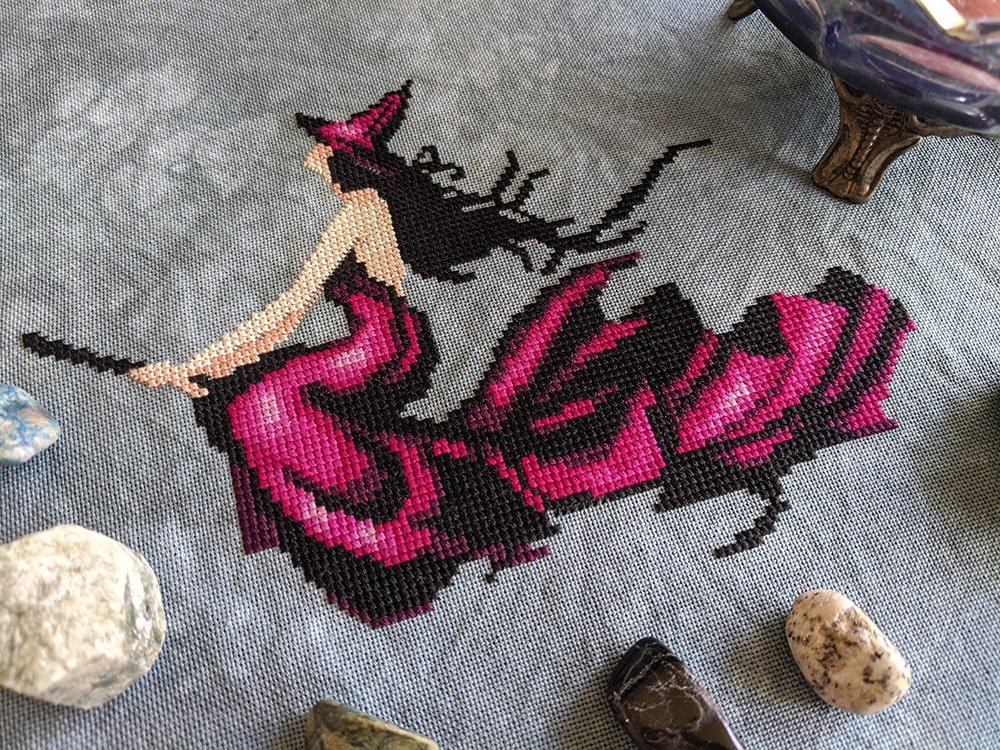
Evevweave is the best fabric to stitch on for intermediate stitchers. As the name suggests, the fabric has an even weave, unlike linen.
This is also a great transition for someone who wants to stitch on linen because it is very similar.
The most common counts for evenweave include 28 count, 32 count, and 36 count.
When stitching on evenweave you will be counting over two. The count is doubled opposed to aida but because you are stitching over two the count is halved. This means that a project on 28 count will be the same finished size as one on 14 count.
Evenweaves are made of cotton blends, although Monaco, which is a type of evenweave is 100% cotton.
Personally, I enjoy stitching on evenweave the best, but there is a lack of colors for 32 count which is my favorite count to stitch. Evenweaves come in many colors in the 28 count. I end up dying a lot of my own fabrics which allows me to get exactly the look I want.
Linen (Experienced)
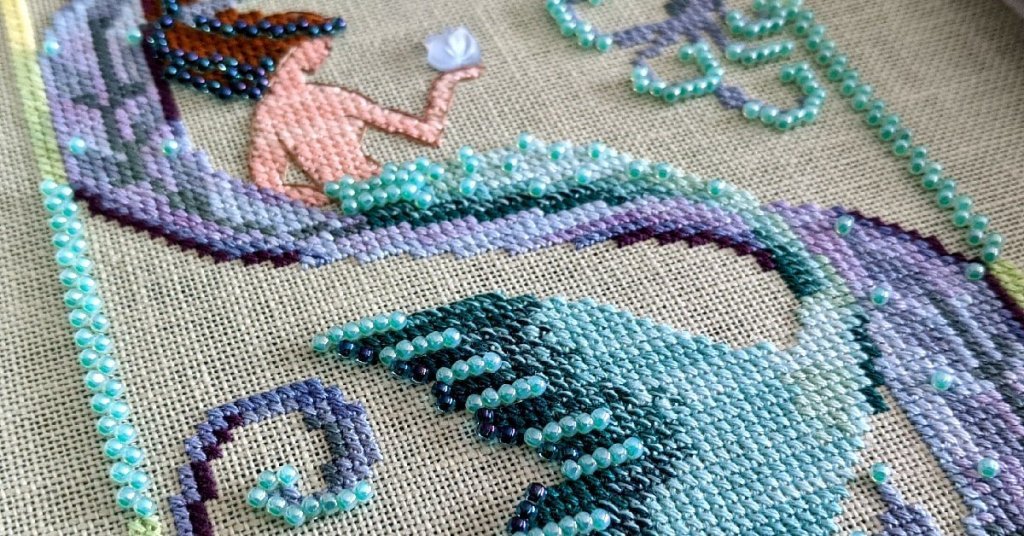
Linen is very similar to evenweave except that it will have thick and thin fibers resulting in some of your stitches being bigger and some being smaller.
This will not affect the final count but can be bothersome.
Linen is made from flax and has a more natural, rustic appearance.
Another drawback to linen is the slubs. Slubs are clumps of fiber stuck in the fabric. With some careful cutting, these slubs can become more manageable and less noticeable.
The counts come in the same variety as evenweave (28, 32, 36) but are available in many more colors.
Because linen is easier to miscount due to unevenness of the warp and weft, it is considered a more advanced fabric to stitch.
Where Can You Buy Fabric by the Yard?
These fabrics can be purchased at online shops and local needlework shops. They have bolts of fabrics that you can request yardage for larger projects or bulk buying.
I prefer to buy bigger pieces and cut them down to size for dyeing and stitching. Stitch smarter, save money.
Again my favorite place to purchase stitching supplies is 123stitch. They have a huge selection.
Embroidery Thread
DMC
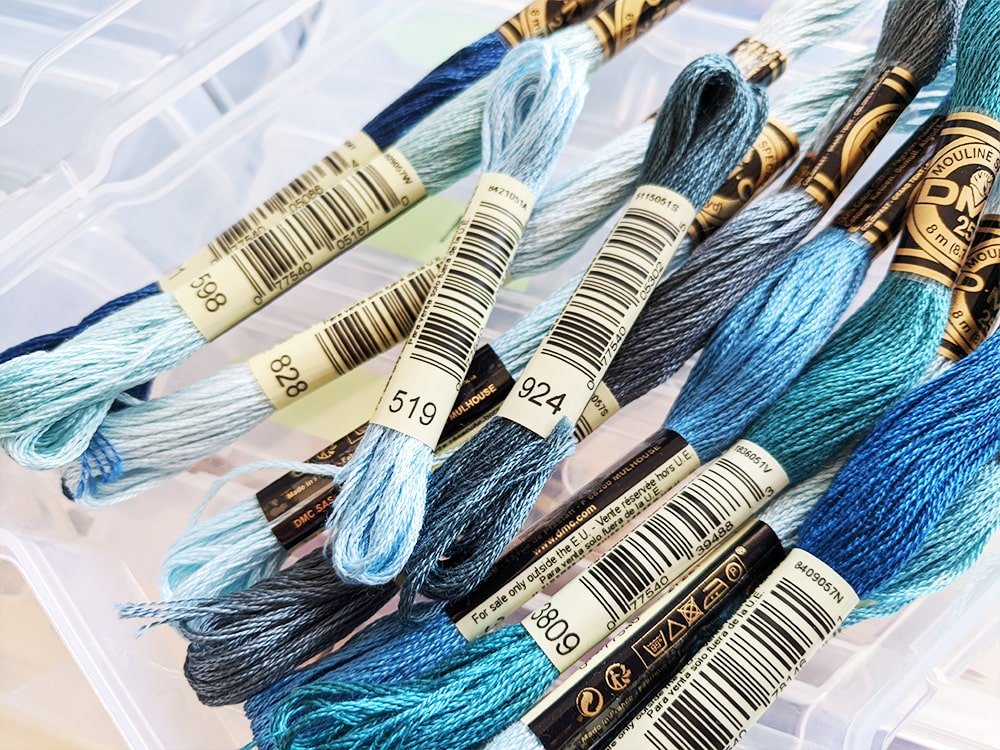
DMC is the most popular embroidery floss. The company was established in 1746 and created its iconic six-stranded floss in 1899.
DMC has the most colors with 489 in their Mouliné Spécial line, not including region-specific exclusives. These are their solid colors. They also have a wide selection of variegated and metallic threads for cross stitching.
However, most charts will list DMC threads because of their popularity and availability. If DMC is not the main thread listed, charts usually include a conversion.
If the chart does not include a conversion, there are plenty on the internet or you can make substitutions yourself.
Classic Colorworks or Gentle Arts
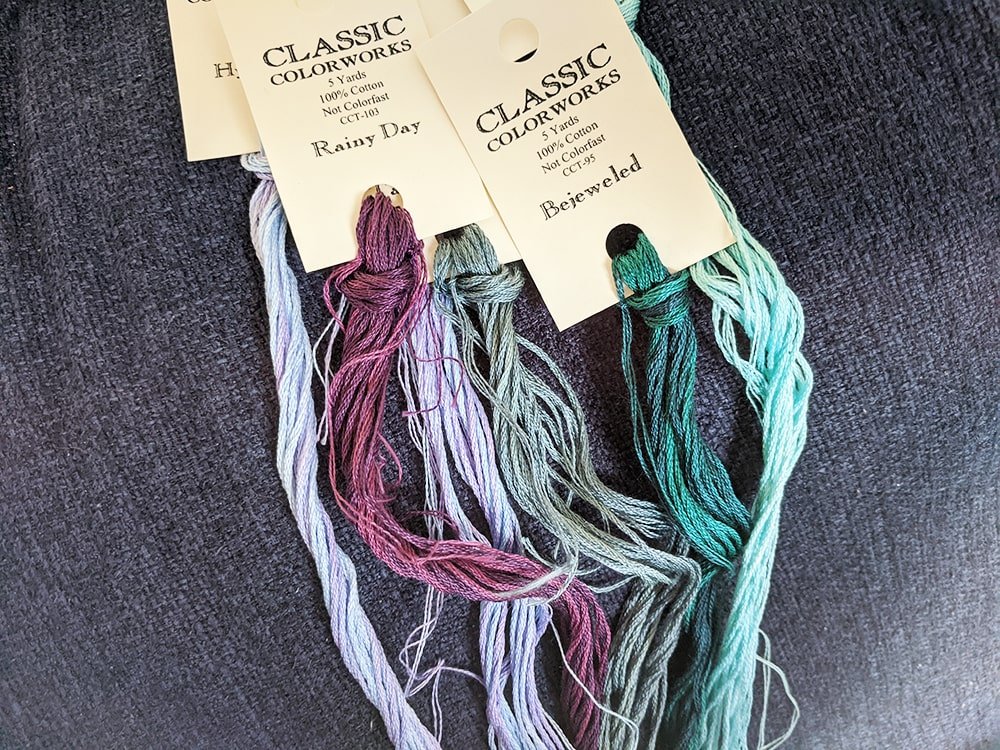
More traditional designers with printed charts will call for Classic Colorworks or Gentle Arts threads.
Because of their hand-dyed quality, they have variegation resulting in two colors or different shades of the same color. This produces a more primitive appearance.
To display the full effect of variegated floss, stitches are done one at a time.
These threads will be slightly more expensive than DMC because of their hand-dyed nature.
Kreinik and other Metallics
Your pattern may call for metallic floss. In the patterns that I’ve come across, usually Kreinik is the brand called for. However, most stitchers prefer Petite Treasure Braids.
Metallic floss is notoriously difficult to work with, but the Petite Treasure Braids are the best metallic floss to stitch with.
Use shorter lengths and use a Lark’s Head Knot to attach the thread to your needle. This will prevent your floss from splitting and keep it on the needle.
You can also use a thread conditioner such as Thread Heaven.
Tapestry Needles
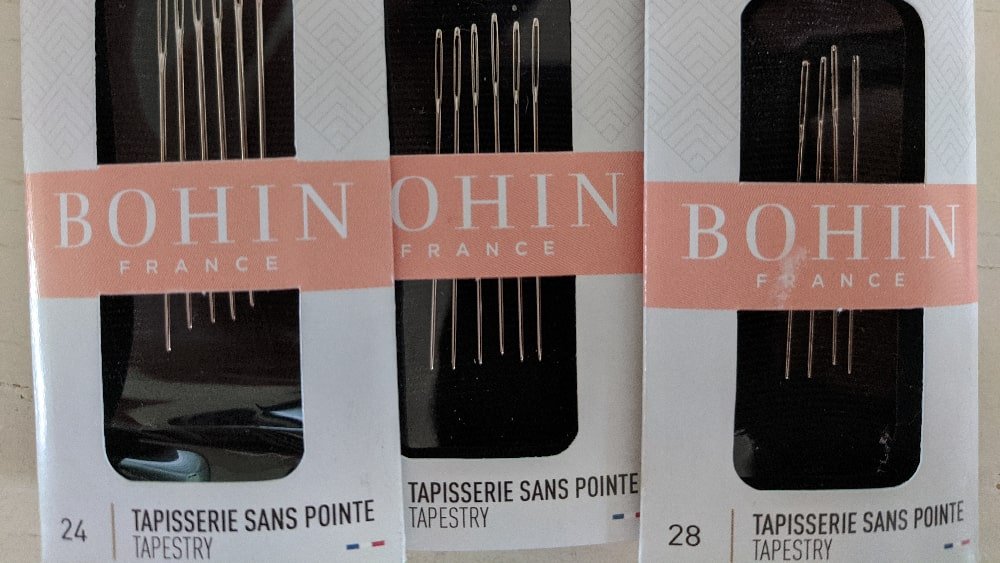
The size of the needle you need to cross stitch with corresponds to the count of your fabric.
The most common sizes of tapestry needles to work with are sizes 24, 26, and 28.
As a general rule-of-thumb when stitching on 14 count or 28 count use a size 24 needle, 16 or 32 use a 26 needle, and 18 or 36 use a size 28.
I prefer to use a 28 size tapestry needle when stitching on 32 count fabric.
Not all tapestry needles are created equal. If you are a beginner, it is acceptable to use a DMC tapestry needle because they are more readily available in craft stores.
However, I would quickly upgrade to a better quality needle. DMC needles are known for breaking and losing their finish faster.
The oils from your fingers break down the finish of the needles. A gold-plated needle will last a little bit longer.
Bohin, John James, Piecemakers, and Pat’s Favorite Needles are all quality brands of stitching needles.
These brands smoothly glide through your fabric and make stitching more enjoyable.
Having trouble threading your needle? Some brands have bigger eyes. I use 28 Bohins and the eye is bigger than a 28 DMC tapestry needle.
Quality needles are also recommended if you have skin allergies or sensitivities because they won’t irritate your skin.
Cross Stitch Accessories
These are considered “extras.” They aren’t necessary to get started but are very useful.
Classic Stork Scissors
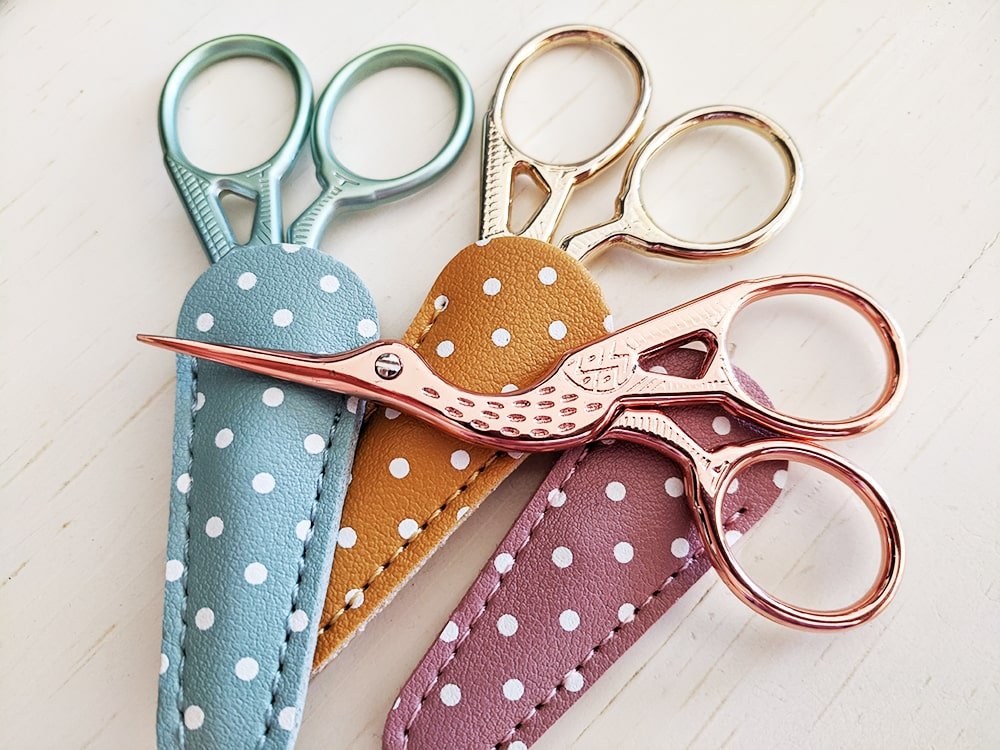
Invest in a good pair of scissors that are solely for cross stitching. Stork scissors are best for getting into tiny spaces. Be careful because they are really sharp.
Needle Minders

I never knew I needed a needle minder until I used one. Needle minders use two magnets to attach to both sides of your fabric and hold your needle.
So many times I have lost my needle. It slips through my fabric and ends up at the bottom of my bag. It can be dangerous losing your needle in your couch or while you are stitching in bed.
With needle minders, you won’t have that problem. Your needle is always right there to stitch with.
My favorite types of needle minders are the ones made from enamel pins and the fabric-covered button needle minders. I have tutorials on how to make your own of both of these needle minders.
The fabric-covered needle minders are easier and more fun because you can have them match the fabric of your grime guard.
Grime Guards
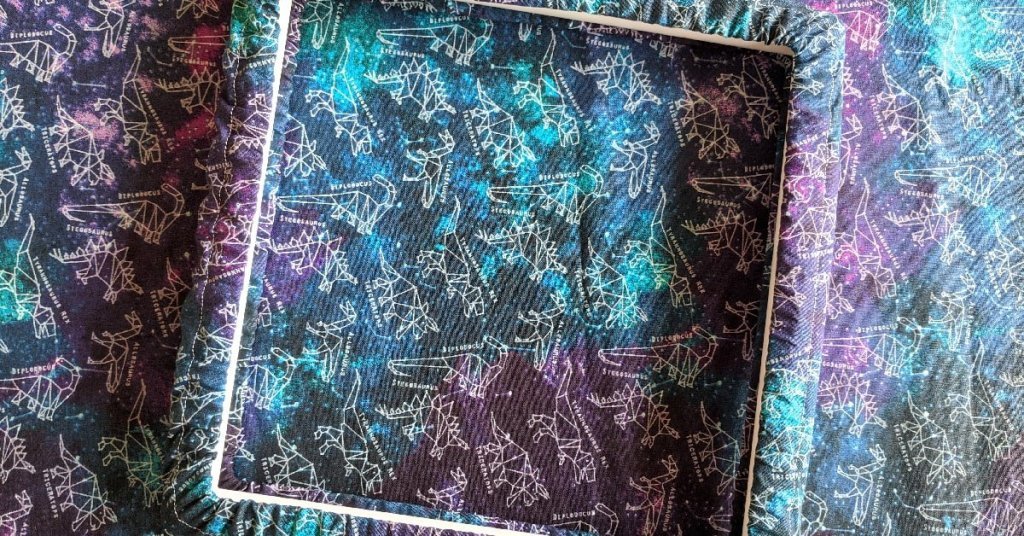
Grime Guards are another accessory that you never knew you needed but are the most useful things in the world.
Do you ever notice stains on your fabric after using a hoop or Q-Snap? That’s because the oils from your hands discolor your fabric. These stains can be really stubborn to remove even with washing your project.
The best way to keep your fabric clean is to prevent stains with a grime guard!
I have tutorials on how to make hoop and Q-Snap grime guards and grime guards for scroll frames.
Hoops/Q-Snaps/Scroll Frames
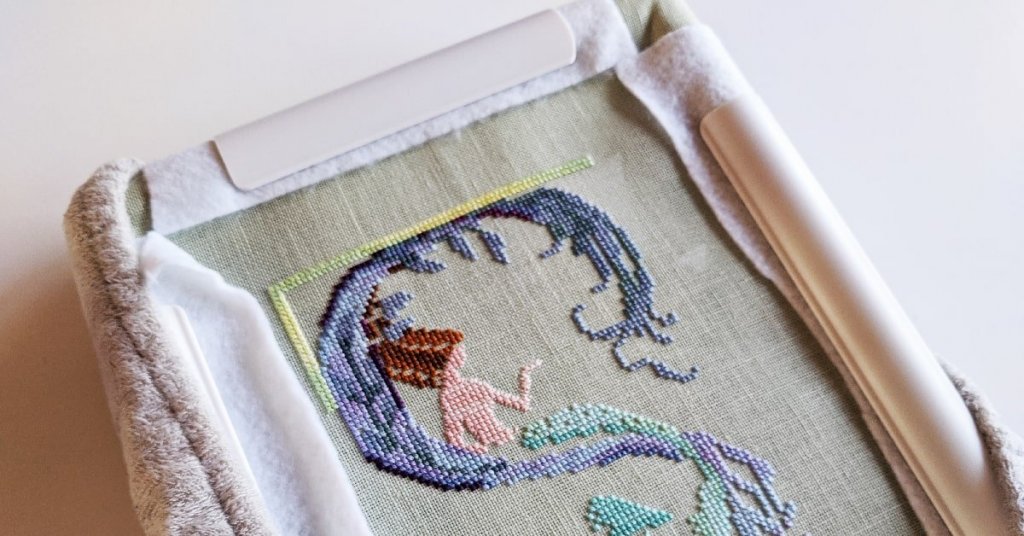
Plenty of stitchers prefer to stitch in-hand. However, there are lots of stitchers who like to use a hoop or frame to keep their fabric taut.
There are different reasons why someone would prefer one method of holding fabric over the other.
Hoops and Q-Snaps are usually reserved for smaller projects, while scroll frames are meant for bigger projects to roll up the access fabric. But this isn’t always true.
Nowadays, my preferred method is using Q-Snaps. At first, I didn’t like them but then I gave them a second chance and now I’m obsessed. I especially love making grime guards and needle minders for them to match my stitching.
Final Thoughts
All you need to get started are a pattern, fabric, embroidery floss, and a tapestry needle. However, some supplies are more quality than others.
Once you figure out what pattern you want to stitch, you can purchase the supplies as long as it fits your skill level or if you are up for the challenge.
You don’t necessarily need to get all the called-for materials. Feel free to make substitutions that will bring you happiness.
If you want to jazz up your stitching setup, there is no shortage of extra accessories available.
Happy Stitching!

